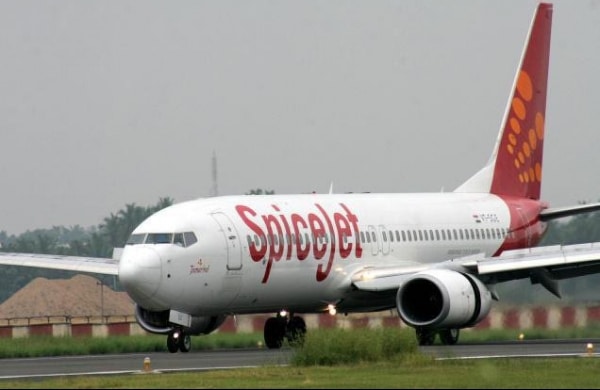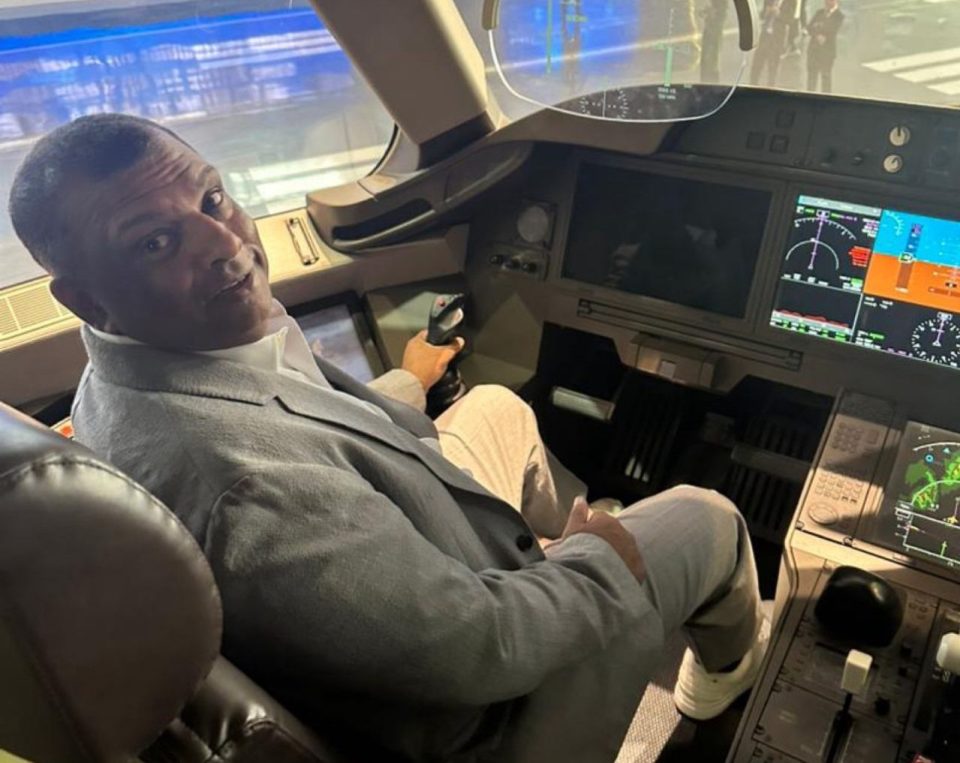Aerospace
Five operators will operate on 128 routes and connect 70 indian regional airports.

According to The Hindu Flights for Rs. 2,500 connecting these smaller centres may begin from April
Beginning April, passengers may be able to fly on as many as 128 routes connecting 70 big and small airports across the country by paying ₹2,500 for an hour’s flight.
The Centre on Thursday announced a list of routes awarded to five airlines which will operate flights under its regional connectivity scheme, named UDAN (Ude Desh ka Aam Naagrik).
“We will be adding 43 new destinations with the launch of RCS,” Civil Aviation Minister Ashok Gajapathi Raju said. “Flying was a rich man’s prerogative earlier, but now it has also become a common man’s prerogative.”
Turbo Megha Airways Low-cost airline SpiceJet, Air India subsidiary Alliance Air along with regional airlines Turbo Megha Airways, Air Deccan and Air Odisha Aviation won the rights to operate flights under the regional connectivity scheme under which half of the seats on the plane will be capped at ₹2,500 per hour’s flight.
Some of the inactive airports that will soon witness regional flights include Shimla, Agra, Bikaner, Gwalior, Kadapa, Rourkela, Jharsuguda, Vidyanagar, Burnpur, Diu, Shillong, Kullu, Mysore, Jagdalpur, Salem, Utkela, and Hosur.
The regional airlines will connect these destinations with their nearest bigger airports such as Delhi, Bengaluru, Chennai, Bhubaneswar, Mumbai, Ahmedabad, and Jaipur, among others.
Civil Aviation Secretary R.N. Choubey said that the first regional flight may likely begin its operations in April. “Fortunately, in the first round of bidding, the airlines focussed on airports that are ready to take flights. The deadline to start operating regional flights is September,” Mr. Choubey said.
Subsidy on losses
As per the scheme, the Centre will subsidise the losses incurred by airlines flying out of dormant airports to help airlines charge ₹2,500 for an hour’s flight to passengers.
80% of the subsidy will be collected by charging a levy of up to ₹8,500 on each departing flight of domestic airlines and the rest 20% will come from the respective State governments.
The Centre had asked airlines to submit their proposed routes along with subsidy amount required to operate the regional flight. This was followed by counter-bids from other airlines and the one asking for the least financial support won the bid.
Government will provide subsidy to airlines for first three years of operations when they will have exclusive flying rights on the selected routes.
“The scheme has a unique market-based design. We have a successful national and international aviation market but an underdeveloped regional market. This scheme will stimulate growth in the regional aviation market and will connect underserved and unserved airports that really didn’t have flight services,” Minister of State for Civil Aviation Jayant Sinha said.
Mr. Sinha said the airlines which had won the first round of bidding under the scheme would require a subsidy of ₹205 crore for running their operations. This would ultimately lead to the creation of 13 lakh seats in the regional aviation market.
“This is really about bootstrapping and creating a market which is not a perpetual subsidy,” Mr. Sinha said. “Once the market gets jump started, it will operate on a commercial basis as per market forces of supply and demand,” the Minister of State added.
To know more click here scheme proposal

Aerospace
India is set to build a central command for the Air Traffic Control system, called ISHAN

India’s air traffic growth has led to increased responsibilities for air traffic control. The Airports Authority of India (AAI) is considering centralizing air traffic control for aircraft, dividing the country into four regions. The goal is to consolidate India’s segmented airspace into a single entity to improve air traffic management (ATM) efficiency, safety, and smoothness.
Recently, the AAI invited expressions of interest to develop a detailed project report for the Indian Single Sky Harmonized Air Traffic Management (ISHAN) initiative in Nagpur. Under this plan, air traffic controllers in Nagpur would handle domestic flights flying above 25,000 feet, eliminating the need for coordination among controllers in different regions.
For domestic regional flights operating above 25,000 feet, control would shift to the central command in Nagpur. This consolidation aims to enhance airline operations, increase flight handling capacity, and reduce congestion and flight times for passengers.
Currently, the AAI provides ATM services over Indian airspace and adjoining oceanic areas, covering over 2.8 million square nautical miles. This airspace is divided into four flight information regions (FIRs) in Delhi, Mumbai, Kolkata, and Chennai, along with a sub-FIR in Guwahati.
FIRs are responsible for providing air traffic services, including weather information, visibility, and search and rescue assistance. The proposed unification under the ISHAN initiative aligns with the projected growth of the aviation industry, which anticipates a doubling of domestic passenger traffic by 2030.
Aerospace
Does AirAsia show interest in Comac aircraft in the future?

Tony Fernandes, CEO of Capital A, operating as AirAsia Group, recently paid a visit to the facilities of COMAC on April 2, 2024, and was thoroughly impressed by what he witnessed.
C919 already securing nearly 1000 orders
COMAC, known for its homegrown aircraft, has launched two promising jets: the ARJ21 and the C919 aircraft. Both aircraft are gaining popularity in the Chinese market, with the C919 already securing nearly 1000 orders from various airlines.
Fernandes expressed his admiration for COMAC’s achievements in aircraft manufacturing, acknowledging the immense challenge it entails. His visit underscored the realization that AirAsia now has a viable third option when it comes to selecting aircraft for its fleet.
During his tour, Fernandes was delighted by the innovation and technology evident in COMAC’s aircraft production and the company’s commitment to long-term partnerships.
He noted that many Western companies have shifted away from prioritizing loyalty and customer service, opting instead for short-term gains and a narrow definition of success.

Last month, COMAC embarked on an international tour, showcasing demonstration flights to neighboring countries, particularly Indonesia and Malaysia. Fernandes believes that the positive impression left by COMAC during his visit opens up new opportunities for collaboration.
Fernandes emphasized COMAC’s remarkable achievements
The shared values of loyalty, customer service, and long-term vision align closely with AirAsia’s ethos, making collaboration with COMAC appealing. With a focus on innovation and excellence, both companies stand to benefit from a partnership grounded in trust and a shared commitment to success.
Indonesia and China have already collaborated in validating and maintaining the airworthiness of the ARJ21 aircraft, indicating a solid foundation for future partnerships.
In his statement, Fernandes emphasized COMAC’s remarkable achievements and genuine desire for long-term partnership, highlighting the absence of ego and a genuine willingness to succeed together. He marveled at COMAC’s fully automated, AI-driven factory, a testament to their dedication to innovation and efficiency.
Fernandes criticized Western firms for prioritizing short-term gains over loyalty, customer service, and long-term strategy, emphasizing the importance of understanding customers’ needs and collaborating to achieve success.
Aerospace
Indigo will soon launch Air Taxi Service in India

InterGlobe Enterprises, the parent brand of IndiGo, is set to revolutionize travel in India with its upcoming air taxi service.
Scheduled for a potential launch in 2026, this innovative venture promises a seamless journey for passengers between two bustling hubs. Delhi and Gurgaon in Haryana. The forthcoming service is projected to revolutionize the daily commute, offering passengers a swift aerial journey covering the distance in a mere 7 minutes.
This remarkable efficiency contrasts starkly with the conventional 90-minute drive, underscoring the immense time-saving potential for commuters. The anticipated fare, ranging from Rs 2,000-3,000, makes this innovative mode of transport not only swift but also remarkably competitive in pricing.
At the heart of this ambitious endeavor lies a strategic partnership with Archer Aviation, a pioneer in electric vertical takeoff and landing (eVTOL) aircraft technology. Under this collaboration, Archer will supply 200 state-of-the-art eVTOL aircraft, representing an investment of US$ 1 billion. These cutting-edge aircraft, capable of accommodating up to four passengers alongside the pilot, epitomize the future of sustainable air travel.
Powered by six battery packs, Archer’s eVTOL aircraft boast rapid charging capabilities, enabling a swift turnaround between flights. With a charging time of just 30-40 minutes, these eco-friendly aircraft ensure minimal downtime, maximizing operational efficiency.
Similar services are anticipated to be introduced by the joint venture in Bengaluru and Mumbai as well. Nevertheless, the service rollout period has not yet been made public by the company. Next year, it is anticipated to get its certification. Following this, the company will start the certification procedure with the Directorate General of Civil Aviation (DGCA).






















